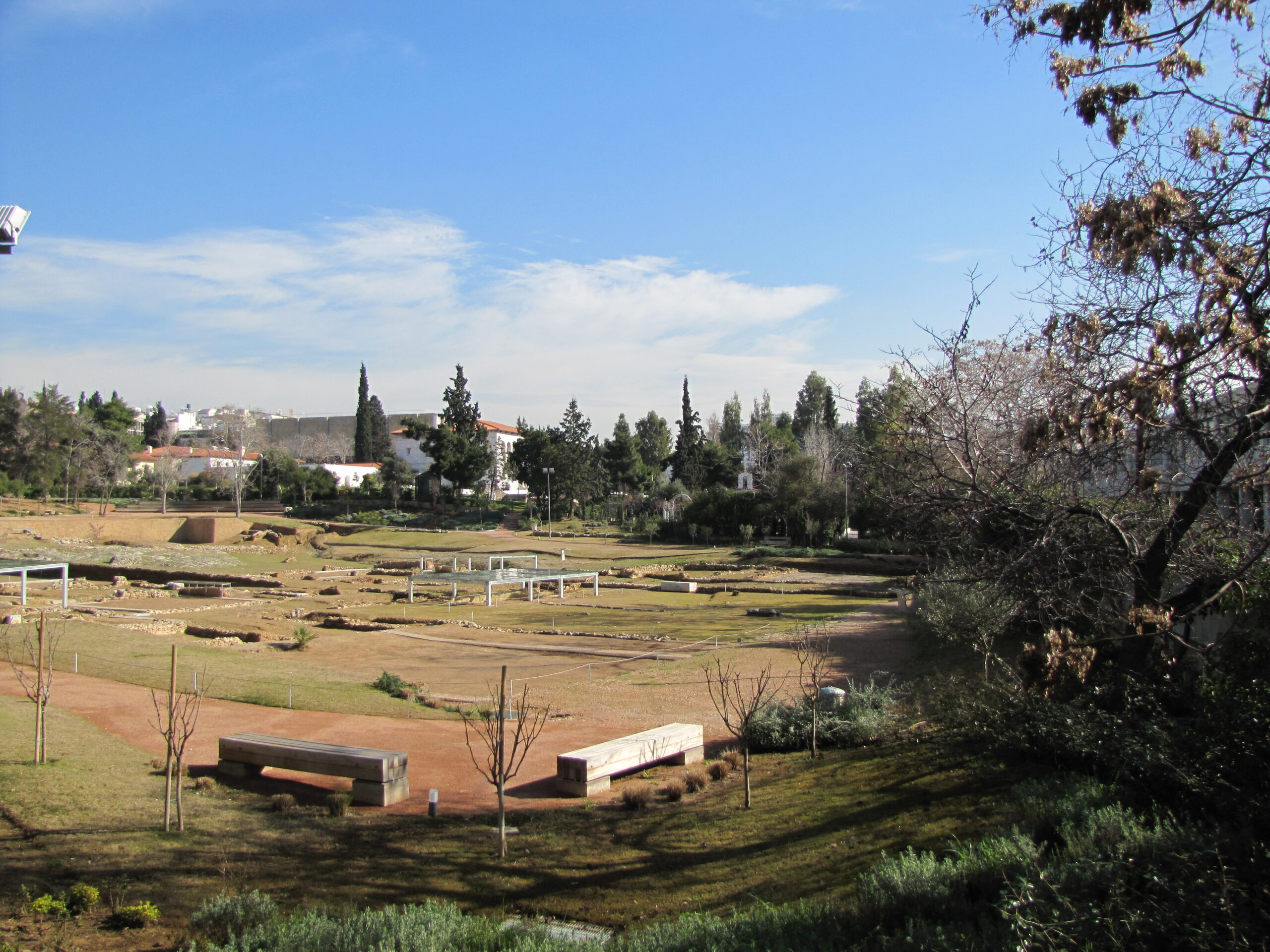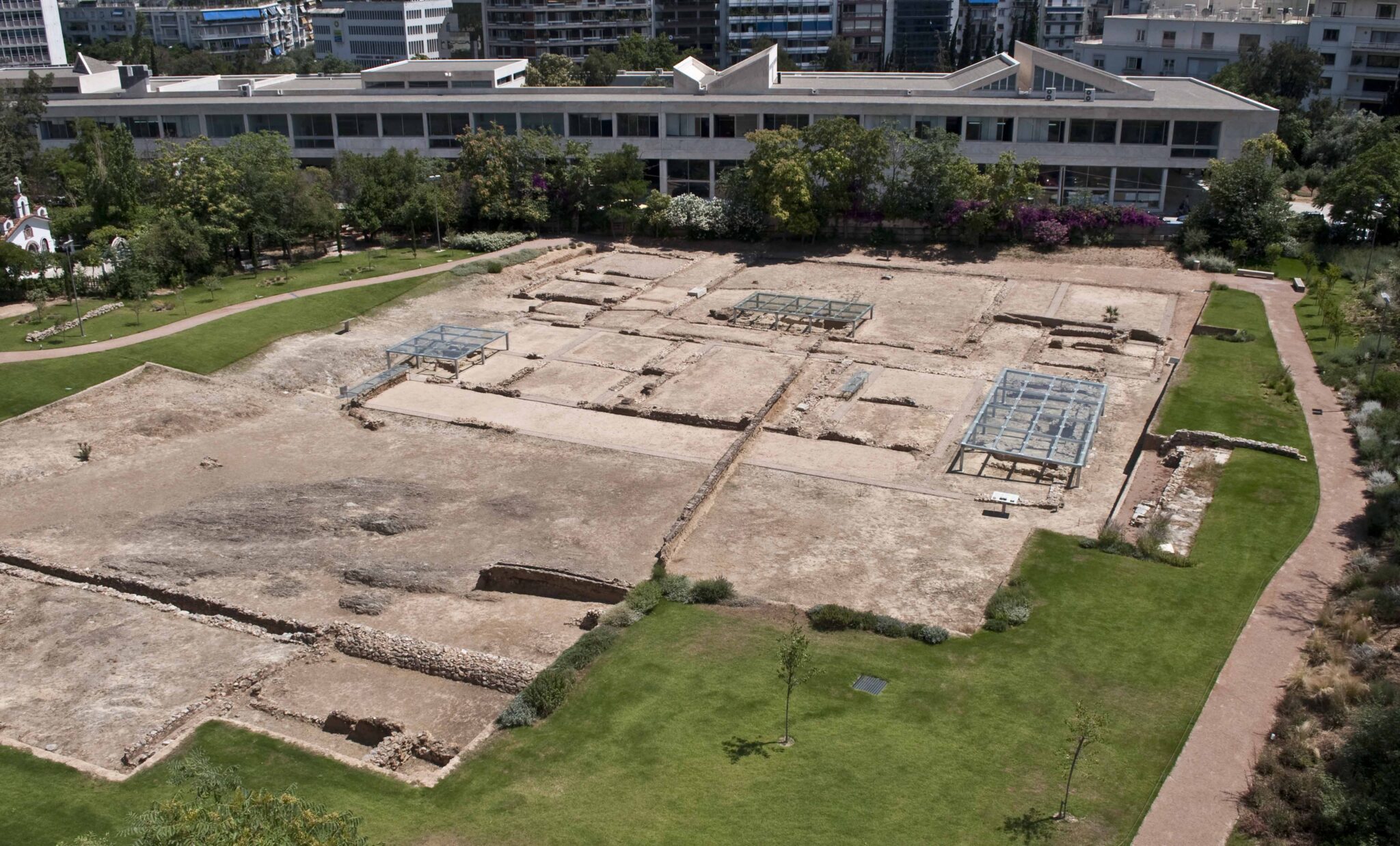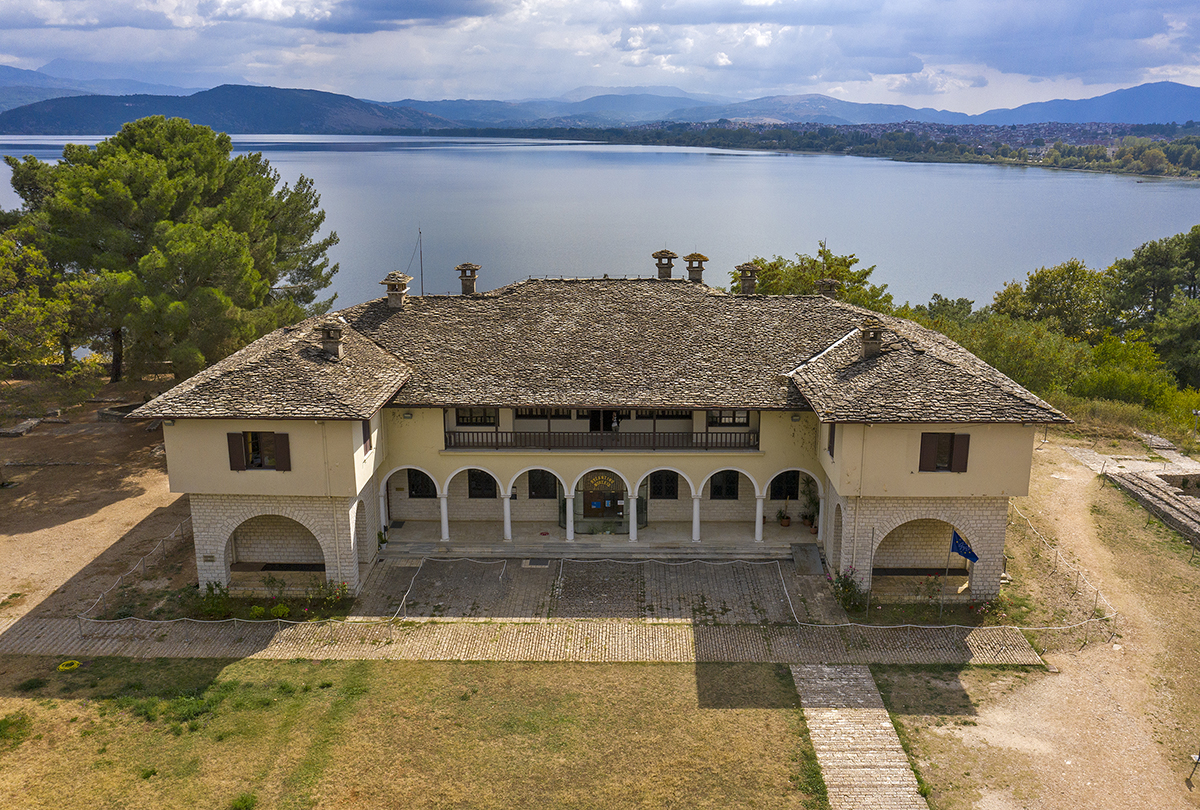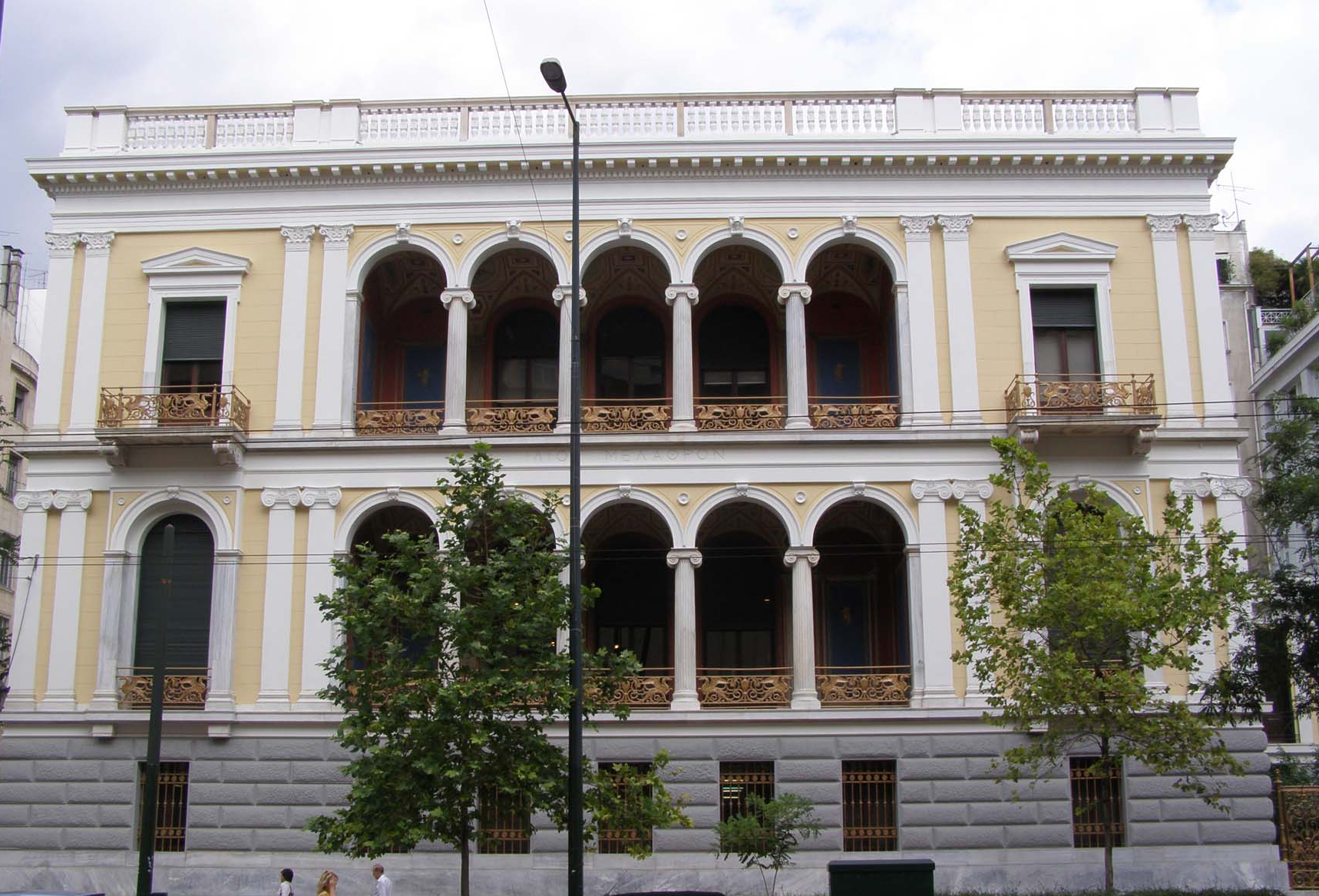According to ancient testimony, the Lyceum was a verdant suburb to the east of Athens, outside the Gate of Diochares.
To the southwest it was bordered by the Olympieion and the other riverside sanctuaries, to the south by the Ilissos River, and to the north by Mount Lycabettus and the Eridanos River. The area appears to have taken its name from the Sanctuary of Apollo Lyceus, which predated the gymnasium but has not yet been located.
The founding of the gymnasium at the Lyceum is attributed by the historian Theopompus to Peisistratus, by the historian Philochorus to Pericles, and by the traveler Pausanias to Lycurgus. The palaestra of the Lyceum, a space for training athletes in wrestling, boxing, and pankration, was established in the second half of the 4th century BC and remained in use, with repairs and additions, for about seven centuries, until the early 4th century AD.
The remains of the palaestra of the Lyceum gymnasium were brought to light in 1996 during excavations for the construction of the Basil & Elise Goulandris Foundation Museum of Modern Art.
Hidden in the heart of Athens, Aristotle’s Lyceum is an oasis that once hosted the Peripatetic School, as it was here that Aristotle taught for roughly twelve years – the most creative period of his life. Aristotle, who had undertaken the education of Alexander the Great, returned to Athens in 335 BC at the age of fifty. He immediately began teaching at the Lyceum, in a lush area stretching from the foothills of Lycabettus to the National Garden, creating his own school within its bounds. This site, covering 11.5 stremmata (approximately 1.15 hectares), borders the garden of the Byzantine and Christian Museum and the Athens Conservatory.
Today, the circular path around the archaeological site, shaded by olive trees, cypresses, and pomegranate trees, as well as fragrant shrubs, rosemary, and lavender, evokes Aristotle’s passion for botany and, at the same time, his habit of walking while he taught.
Access
Pavlou Mela Square
10675, Athens
3 minutes from “Evangelismos” metro station
Line 1, exit at “Evangelismos” metro station
By bus: Lines 203, 204, 204B, 211, 214, 220, 221, 224, 235, 400, 608, 622, 815, A5, E14
By trolleybus: Line 3
Opening hours
April 1 – August 31
Daily: 08:00 – 20:00
September 1 – 15
Daily: 08:00 – 19:30
September 16 – 30
Daily: 08:00 – 19:00
October 1 – 15
Daily: 08:00 – 18:30
October 16 – 31
Daily: 08:00 – 18:00
November 1 – March 31
Daily: 08:00 – 15:00
The site remains closed on the following dates and public holidays: January 1, March 25, May 1, Easter Sunday, December 25 & 26.
Tickets
Full: €5,00
Reduced: €3,00
Amenities
Contact
Ephorate of Antiquities of Athens
T: +30 210 7251348, +30 210 9238747
E: efaath@culture.gr




